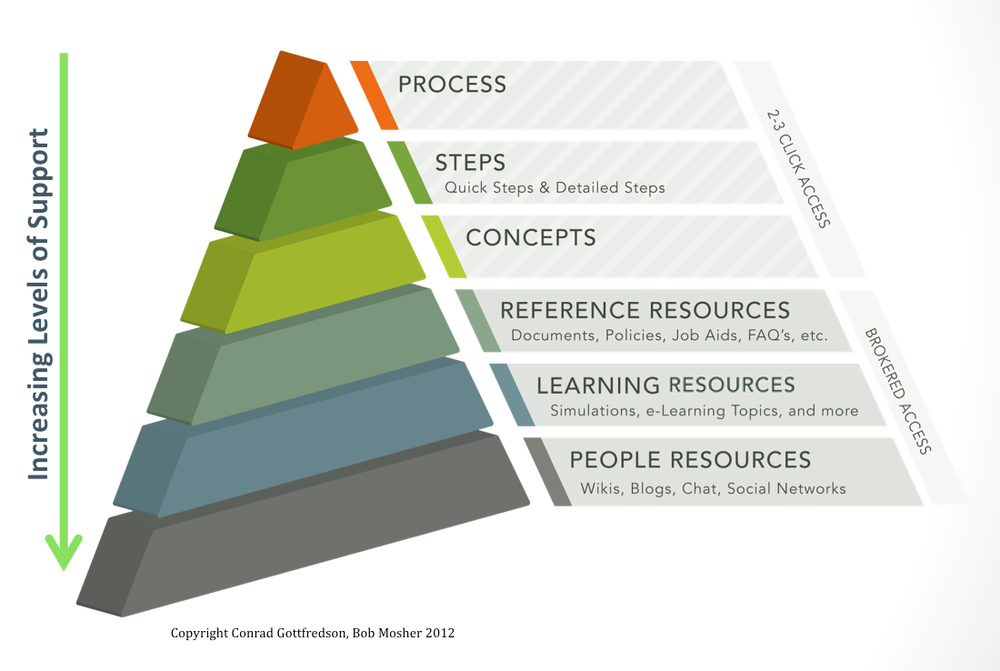In the last performance support blog post I talked about the importance of providing the right information and the right amount of information at the right time to help increase productivity and reduce time off the job spent looking for answers. I also included the first of our top five articles of 2013 on performance support. So here's article #2:
The Round-Up: #2
Now's the Time for Performance Support By: Conrad Gottfredson, April 26, 2013
Gottfredson, Chief Learning Strategist of Ontuitive, a world-leader in performance support, is an extremely credible voice in the performance support arena and has produced a wealth of very informative and insightful articles in 2013.
Gottfredson based this article on Gloria Gerry’s book “Electronic Performance Support Systems” that she wrote in 1991. The content in this book has become extremely relevant again and the desired approaches more achievable, due to the existing and emerging technologies available now. Gottfredson devised six attributes or principles of an effective performance support solution from Gerry’s definition of the same term where performance support is an: “Orchestrated set of technology-enabled services that provide on-demand access to integrated information, guidance, advice, assistance, training and tools to enable high-level job performance with a minimum of support from other people”. The Performance Support Pyramid methodology is intertwined throughout these attributes and provides a hierarchy for “anticipating the evolving information requirements of a performer”.
Gottfredson also includes a graphic that visualizes learning transfer after a training event. This  subsequently shows how performance support steps in when that transfer does not occur due to lack of use or forgetting. Not implementing a performance support system is like sending someone into a forest without giving them a map. Overall, this is an excellent study on performance support that provides great insight and advice on how an effective strategy encourages self-supported, high-performing, independent and productive workers with minimum disruption to other people in the organization.
subsequently shows how performance support steps in when that transfer does not occur due to lack of use or forgetting. Not implementing a performance support system is like sending someone into a forest without giving them a map. Overall, this is an excellent study on performance support that provides great insight and advice on how an effective strategy encourages self-supported, high-performing, independent and productive workers with minimum disruption to other people in the organization.
Do you have any favourite performance support articles or research? We’d love for you to share them with us.
Stay tuned for more upcoming blog posts for the remaining top five performance support articles of 2013 … and be sure to check out the first article of five in this series:








